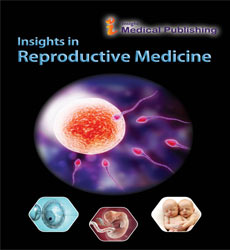Revise The Caesarean, Save Women Lives
Consultant Obstetrician, Pinderfields Hospital, Midyorks Nhs, UK
Abstract
In 1882, Max Sanger, a 28 years-old assistant of Crede in the University Clinic at Leipzig, was the first surgeon to suture the uterine wall during caesarean and save women from death. Till then, the uterine incision was left unsutured and as a result not even a single woman survived the procedure. So many years after, bleeding during Caesareans remains life threatening. Amazingly the causes are considered the same as for vaginal delivery and therefore attributed to uterine atony, trauma, tissue and thrombin.. It is time now time to revise the causes of PPH during caesareans autonomously from what is happening during parturition. To embrace new techniques. To remodel the Caesareans. This will save lives.
To authenticate the surgeon, the most undefined factor for the bleeding during Caesarean sections. To demonstrate that based on his expertise and improved techniques that he can use, he will spare the blood loss. To show that available devices from the market now showing to formulate an easier procedure and minimise bleeding. Using an advanced technique based on experience and modern devices the surgeon can remodel the Caesarean.
• The Surgeon remains the undefined factor for the bleeding. His expertise and methods are not included in the under evaluation factors.
• The training for juniors to perform Caesareans seems basic, national guidelines do not embrace new techniques.
• Caesarean section rates have increased to staggering five times from Sanger times.
• The way the procedure performed remained unchanged for decades despite difficulties and new challenges ( very prolonged labours, impacted head in pelvis, previous organ injuries )
• Uterine Compression, can easily be applied during caesareans and yet not evaluated adequately, (abdominal packs and exteriorisation of uterus)
• No literature with regards how to perform complicated types of procedure ( placenta previa, repeated caesareans, second stage caesareans, placenta accreta, severe scar dehiscense )
• The procedure nowadays becomes more complex ( obesity, GDM, IVF, DFM, SGA )
• Available devices from the competing market now can formulate an easier procedure and yet very rarely used. They can be either not available or with no knowledge how to use. Cost effectiveness is another issue and hospitals not embracing new methodology.
Caesarean section rates are stunningly high with a global estimate number of 20-25 million every year, or one caesarean every second. Bleeding was always the fury of the caesarean and back in 18th century all women died as uterus left unsutured. Caesarean was the deadliest of all procedures. One surgeon dared to challenge his colleagues and changed the belief that sutures in the uterus were superfluous and harmful. Dr Sanger saved women lives. Bleeding still remains defiant nowadays, blood transfusion is meant to save the day and yet, bleeding only reviewed under same factors that apply to vaginal delivery. The surgeon, who is in direct contact and has visual on the bleeding organ, has not been evaluated for decades. He can prevent bleeding, by applying abdominal packs. He can exteriorize and compress the uterus to control bleeding. Referral to Aesthetic approach and Uterine Compression posters in this seminar and how to control bleeding in Caesareans where other methods described in favor of the surgeon. The lack of available literature in ways of performing the Caesarean, especially the complicated one, or even how to prevent bleeding in the simple ones, was the challenge to use the expertise from a large number of procedures (5-6k) that performed uneventfully over last 8 years and suggest to rewrite the Caesareans.
It is now for the first time since 1882 when the expertise of one surgeon saved all women lives, to revise and remodel the Caesareans. To recognise the absolute role of the surgeon, not only to perform the procedure but truly to triumph over the fury of bleeding. Not to allow the Caesarean to become the Nemesis of our practise. That will be a great contribution to modern obstetrics, moving forward by looking back to Max Sanger.
1. eliminate it, Singapore, RCOG 2018 https://goo.gl/images/SFDL9F
2. Lourou K, 1927, Obstetrics : Second Editiion ,Makris & Sia, Athens
3. Hellman L, Pritchard J, Wynn R, Williams Obstetrics, Fourteenth Edition, Butterworths London, 1970
Note: This work is partly presented at the Event on International Conference Gynecology, Obstetrics & Reproductive Health, Aug 23-24, 2018 held at Amsterdam, Netherlands
Open Access Journals
- Aquaculture & Veterinary Science
- Chemistry & Chemical Sciences
- Clinical Sciences
- Engineering
- General Science
- Genetics & Molecular Biology
- Health Care & Nursing
- Immunology & Microbiology
- Materials Science
- Mathematics & Physics
- Medical Sciences
- Neurology & Psychiatry
- Oncology & Cancer Science
- Pharmaceutical Sciences
